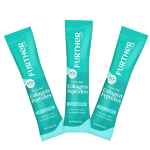- Cut out classic trigger foods: I cut out foods that lupus patients are advised to stay away from such as processed sugars, large amounts of meat (especially red meat because of its inflammatory properties), fried foods, alfalfa and nightshade vegetables.
- Journal: This is so important. I am now aware of my trigger foods and foods that make me feel sluggish, thanks to the process of intense journaling. I would strongly suggest this for anyone with an autoimmune disease. Being able to look back at times of flare-ups, and a sudden increase of symptoms such as sores in my mouth and nose, and fevers or pain, often times directly correlated with specific foods I was eating.
- Make a List: I think the key for me keeping certain symptoms under control through diet was making a list of foods that I loved and that weren't causing a reaction. Then I researched different recipes that contained these foods so I could have some variety. This also helps to maintain a healthy relationship with food, and to be grateful for all the edibles that you can enjoy.
- Increase whole foods: I began to tweak my diet and increase raw foods and juicing on a daily basis. I try to stick with gluten-free and vegetarian options. That being said, I do have my cheat days! I don’t believe in depriving ourselves of food we crave - just eat these foods in moderation. Pay attention, and see if it causes any immediately or delayed symptoms.
Lupus Left Me in a Wheelchair. I Fought Back to Walk Again. Now, I'm the Reigning Mrs. New York

I was 23 when I was diagnosed with Lupus. After multiple small strokes, blood clots, heart issues, chemo and more than 30 hospitalizations, I would wind up in a wheelchair at 31 years old. That was one of my worst lupus flares. I was wheelchair bound, confined to a hospital bed, unable to feed or bathe myself, and slowly wasting away. At this point I knew I needed a drastic lifestyle change and that I could not go on living this way. I became fascinated by how combining pharmaceutical options with diet and alternative therapies could possibly help.
Through intense juicing, diet changes, and supplementation, I was able to get myself out of the wheelchair. It was a slow process - 7 years - but I went from being fully reliant on others to 100% independent.
Today, because of these improvements, I am the reigning Mrs. New York USA Universal, and will compete in Reno this summer at Mrs. USA Universal – something I would not have been able to physically do years ago.
Dealing with Lupus for 13 years has taught me many things about the importance of diet, nutrition and exercise. I want to help and inspire others. Here are some lifestyle and diet strategies I wished someone had told me when I was first diagnosed with lupus:
























